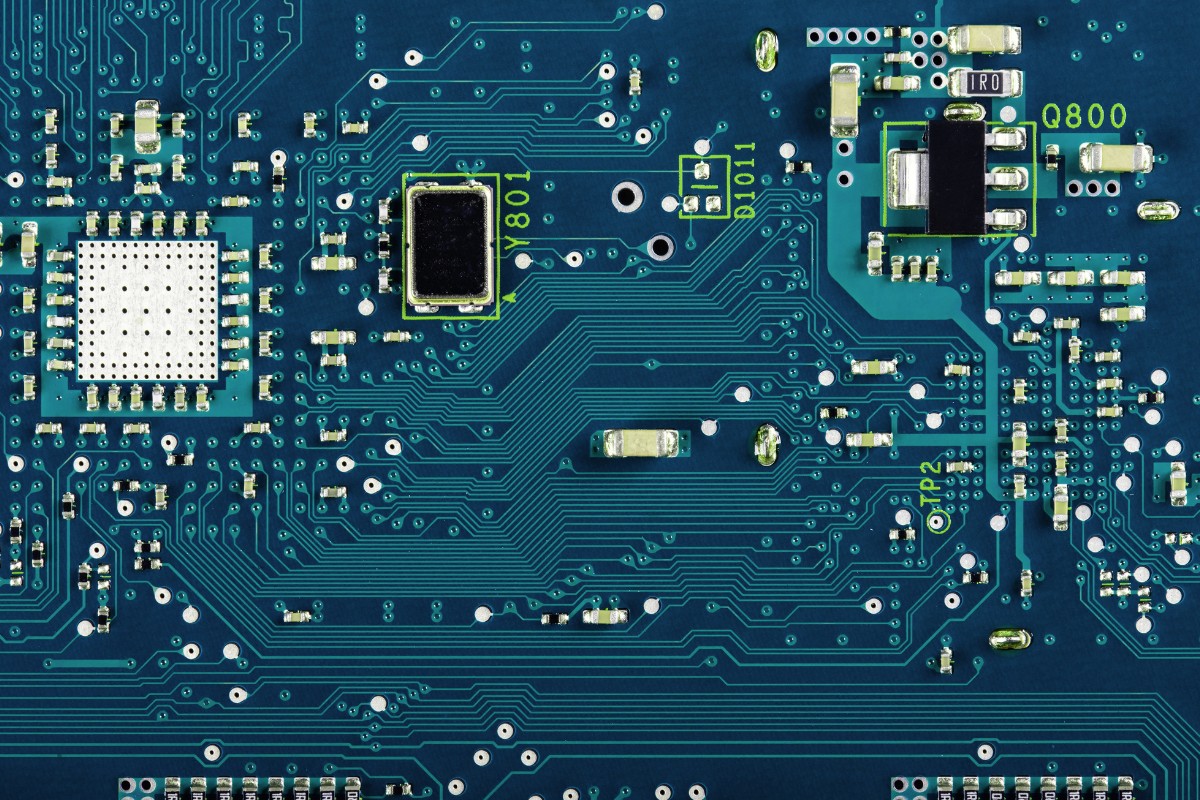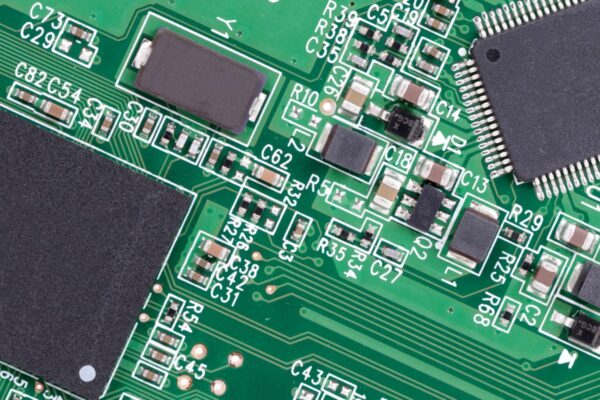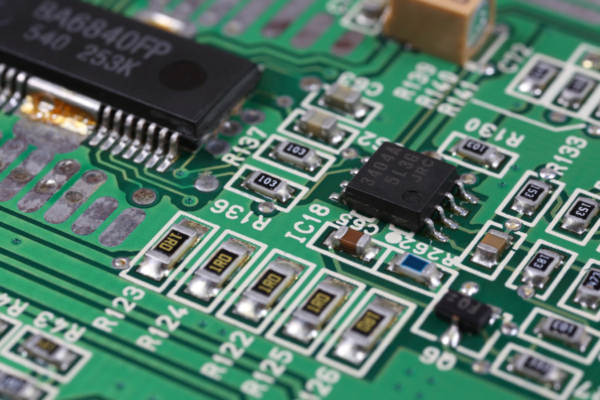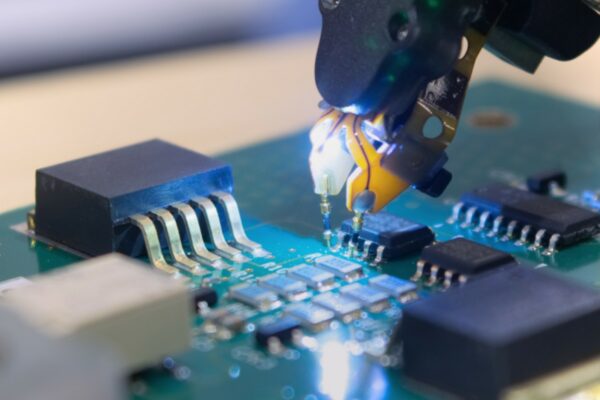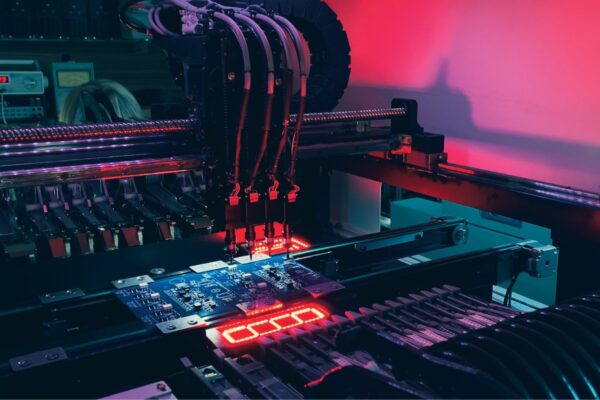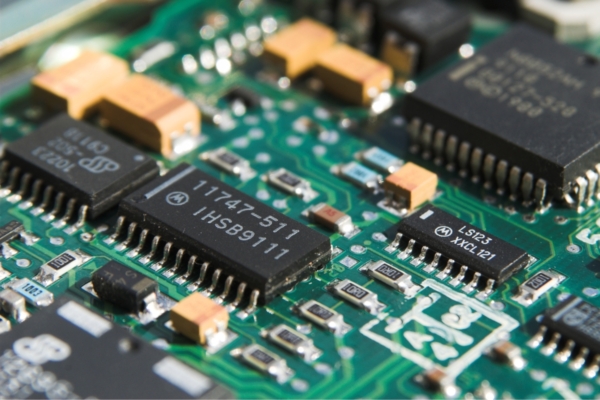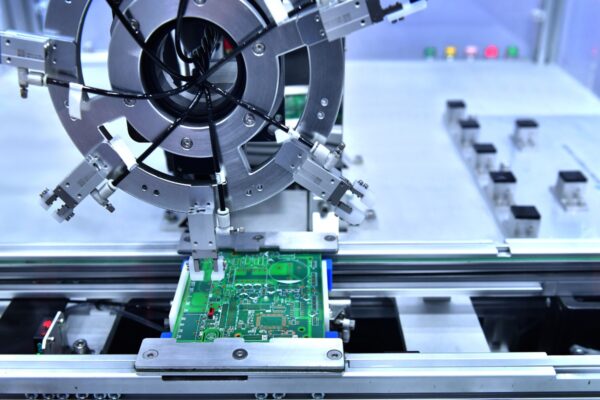PCBA (Printed Circuit Board Assembly) coating is a crucial process in electronics manufacturing. It involves applying a thin, protective layer to the surface of a printed circuit board and its components. This coating acts as a barrier against environmental factors that can damage or degrade the performance of electronic devices. Have you ever wondered how your electronic devices withstand the test of time and varying environmental conditions? The answer, in many cases, lies in the often-overlooked process of PCBA coating.
What is PCBA Coating
PCBA coating, also known as conformal coating, is a polymeric film-forming product that protects circuit boards from moisture, dust, chemicals, and temperature extremes. It conforms to the contours of the board and components, providing a protective layer without significantly increasing the size or weight of the assembly. The primary purpose of PCBA coating is to enhance the reliability and longevity of electronic devices by preventing corrosion, short circuits, and other types of damage.
PCBA coatings are essential for electronics used in harsh environments, such as automotive, aerospace, military, and industrial applications. Even consumer electronics can benefit from PCBA coating, especially in humid or dusty environments. Think about your smartphone surviving a splash of water or your car’s electronics functioning flawlessly in extreme heat – PCBA coating plays a vital role in these scenarios.
Types of PCBA Coatings
Several types of PCBA coatings are available, each with its own unique properties and applications. Let’s delve into the specifics:
Acrylic Resin Coatings
Acrylic coatings are typically based on acrylic polymers dissolved in a solvent. They offer good moisture and dielectric protection, are easy to apply and remove, and dry quickly at room temperature. They have moderate abrasion resistance.
Advantages: Fast drying, easy to rework, good moisture resistance, relatively low cost.
Disadvantages: Limited solvent resistance, not suitable for high-temperature applications.
Typical Applications: General-purpose protection for consumer electronics, appliances, and industrial controls.
Performance Data: Dielectric strength: 15-25 kV/mm; Moisture resistance: good; Temperature range: -55°C to 125°C.
Epoxy Resin Coatings
Epoxy coatings are two-part systems consisting of an epoxy resin and a hardener. They provide excellent chemical and abrasion resistance, high dielectric strength, and good adhesion.
Advantages: Excellent chemical resistance, high abrasion resistance, good adhesion, high-temperature resistance.
Disadvantages: Difficult to rework, longer curing time, can be brittle.
Typical Applications: Automotive electronics, industrial equipment, applications requiring high chemical resistance.
Performance Data: Dielectric strength: 20-30 kV/mm; Moisture resistance: excellent; Temperature range: -55°C to 150°C.
Urethane Resin Coatings
Urethane coatings are based on polyurethane polymers and can be one-part or two-part systems. They offer excellent moisture and chemical resistance, good flexibility, and abrasion resistance.
Advantages: Excellent moisture resistance, good chemical resistance, good flexibility, good abrasion resistance.
Disadvantages: Sensitive to humidity during application, moderate temperature resistance.
Typical Applications: Aerospace, military, and industrial applications requiring high moisture resistance.
Performance Data: Dielectric strength: 18-28 kV/mm; Moisture resistance: excellent; Temperature range: -60°C to 130°C.
Silicone Resin Coatings
Silicone coatings are based on silicone polymers and can be one-part or two-part systems. They offer excellent high-temperature resistance, flexibility, and good dielectric properties.
Advantages: Excellent high-temperature resistance, good flexibility, good dielectric properties, good UV resistance.
Disadvantages: Poor abrasion resistance, higher cost than other coatings.
Typical Applications: High-temperature applications, LED lighting, automotive electronics.
Performance Data: Dielectric strength: 20-30 kV/mm; Moisture resistance: good; Temperature range: -60°C to 200°C.
Parylene Coatings
Parylene coatings are applied as a vapor-phase deposition of a poly-para-xylylene polymer. They provide excellent barrier properties, uniform thickness, and can penetrate into very small crevices.
Advantages: Excellent barrier properties, uniform thickness, excellent chemical resistance, biocompatible.
Disadvantages: High cost, specialized equipment required for application, difficult to rework.
Typical Applications: Medical devices, aerospace, military, applications requiring very thin and uniform coatings.
Performance Data: Dielectric strength: 5-7 kV/mil; Moisture resistance: excellent; Temperature range: -200°C to 200°C.
Parylene’s unique vapor-phase deposition allows it to coat even the most complex geometries with exceptional uniformity, making it ideal for protecting intricate microelectronics. This is a game-changer in industries where miniaturization and reliability are paramount.
Advantages and Disadvantages of PCBA Coating
While PCBA coating offers numerous benefits, it’s essential to consider potential drawbacks as well.
Advantages:
- Environmental Protection: Shields against moisture, dust, chemicals, and other contaminants.
- Improved Reliability: Prevents corrosion, short circuits, and other failures, ensuring consistent performance.
- Enhanced Durability: Increases the lifespan of electronic devices, reducing the need for frequent replacements.
- Electrical Insulation: Provides dielectric insulation between conductors, preventing electrical leakage.
- Mechanical Support: Adds mechanical strength to solder joints and components, making them more resistant to vibration and shock.
- Temperature Resistance: Protects against thermal shock and high temperatures (depending on the coating type).
Disadvantages:
- Rework Challenges: Makes rework and repair more difficult, potentially increasing repair time and cost.
- Added Cost: Adds to the overall manufacturing cost, although this is often offset by increased product lifespan.
- Increased Processing Time: Adds an extra step to the manufacturing process, potentially impacting production timelines.
- Potential for Masking Issues: Requires careful masking of areas that should not be coated, adding complexity to the process.
- Potential for Trapped Moisture: Improper application can trap moisture under the coating, leading to failures.
While rework is a common concern, proper coating selection and application techniques can minimize these challenges, and the long-term reliability benefits often outweigh the drawbacks. It’s a trade-off between upfront investment and long-term performance gains.
How PCBA Coating Works
PCBA coating works by creating a physical barrier between the electronic components and the surrounding environment. This barrier prevents moisture, dust, chemicals, and other contaminants from coming into contact with the sensitive components and causing damage. The coating also provides electrical insulation, preventing short circuits between closely spaced conductors. In addition, the coating can provide mechanical support to solder joints and components, reducing the risk of damage from vibration or mechanical shock. The effectiveness of the coating depends on its material properties, thickness, coverage, and adhesion to the substrate.
The effectiveness of a PCBA coating is not solely determined by its inherent material properties but also by the quality of its application. A perfectly formulated coating can fail if applied unevenly or with inadequate coverage. This highlights the importance of meticulous application processes.
PCBA Coating Application Methods
Several methods are used to apply PCBA coatings, each suited to different production volumes and board complexities.
Brush Coating
This method involves applying the coating material with a brush. It’s a simple, low-cost approach suitable for small batches and prototypes. However, it can result in inconsistent thickness and is labor-intensive, making it unsuitable for high-volume production.
Advantages: Simple, low cost, suitable for small batches and prototypes.
Disadvantages: Inconsistent thickness, labor-intensive, not suitable for high-volume production.
Best Use Cases: Prototyping, repairs, low-volume production.
Dip Coating
Dip coating involves immersing the PCBA in a bath of coating material. This method provides good coverage and is relatively simple. However, it requires a large volume of coating material, can be difficult to control thickness, and is not suitable for all components.
Advantages: Good coverage, relatively simple process.
Disadvantages: Requires large volume of coating material, difficult to control thickness, not suitable for all components.
Best Use Cases: Small to medium-volume production, components that can withstand immersion.
Spray Coating
Spray coating uses a spray gun to apply the coating material. It’s a fast, efficient method that offers good control over thickness and is suitable for high-volume production. However, it requires specialized equipment, overspray can be an issue, and may require masking.
Advantages: Fast, efficient, good control over thickness, suitable for high-volume production.
Disadvantages: Requires specialized equipment, overspray can be an issue, may require masking.
Best Use Cases: High-volume production, complex geometries.
Selective Coating
Selective coating involves applying the coating material only to specific areas of the PCBA using automated equipment. This method offers precise application, minimal masking, and reduces material waste. However, it has a higher equipment cost and requires programming and setup.
Advantages: Precise application, minimal masking required, reduces material waste.
Disadvantages: Higher equipment cost, requires programming and setup.
Best Use Cases: High-volume production, complex boards with areas that should not be coated.
Curing Methods for PCBA Coatings
After application, PCBA coatings need to be cured to achieve their optimal properties.
Air Drying
Air drying is the simplest curing method, where the coating cures at room temperature through solvent evaporation.
Advantages: Simple, no special equipment required.
Disadvantages: Slow curing time, can be affected by ambient temperature and humidity.
Best Use Cases: Acrylic coatings, small-batch production.
Heat Curing
Heat curing involves curing the coating at an elevated temperature in an oven.
Advantages: Faster curing time, improved coating properties.
Disadvantages: Requires an oven, may not be suitable for all components.
Best Use Cases: Epoxy and urethane coatings, high-volume production.
UV Curing
UV curing uses ultraviolet (UV) light to cure the coating.
Advantages: Very fast curing time, good for high-volume production.
Disadvantages: Requires specialized UV curing equipment, may not be suitable for all coating materials.
Best Use Cases: UV-curable coatings, high-volume production.
The curing process can significantly affect the final properties of the coating. For example, heat curing can improve the chemical resistance and adhesion of epoxy coatings, while UV curing can provide a very hard and durable finish for certain types of coatings. Choosing the right curing method is as crucial as selecting the right coating material.
Standards and Specifications for PCBA Coating
Several industry standards and specifications govern the use of PCBA coatings, ensuring quality and reliability. These include:
- IPC-CC-830: This is a widely recognized industry standard for conformal coating materials and processes.
- IPC-A-610: This standard covers the acceptability of electronic assemblies, including criteria for conformal coating.
- MIL-I-46058C: Although technically obsolete, this military specification for insulating compounds is still referenced in some industries.
- IEC 61086: This is an international standard for conformal coatings.
These standards define requirements for coating materials, application processes, testing, and inspection. Compliance with these standards ensures that the coating meets certain performance and quality requirements, providing assurance to both manufacturers and end-users.
Choosing and Costing the Right PCBA Coating
Selecting the appropriate PCBA coating requires careful consideration of various factors. The operating environment, including temperature, humidity, and potential chemical exposure, plays a crucial role. Reliability requirements, such as the expected lifespan and acceptable failure rate, must also be taken into account. Component sensitivity is another important factor, as some components may be sensitive to certain coating materials or curing methods. Production volume influences the choice of application method, with different methods being suitable for different volumes.
Cost is a significant consideration, encompassing material cost, equipment cost, and labor cost. The ease of reworkability, or the ability to remove and reapply the coating, can also impact overall cost.
The choice of PCBA coating should be based on a careful analysis of the application requirements and a thorough understanding of the trade-offs between different coating types and application methods. A cost-benefit analysis should be performed to determine the most cost-effective solution that meets the required performance and reliability criteria. This is not simply about choosing the cheapest option but about finding the best value for the specific application.
PCBA Coating Thickness and Coverage
The thickness of the coating significantly affects its protective properties. Typically, PCBA coatings range from 25-250 microns (1-10 mils) in thickness, depending on the coating type and application. Measurement methods include wet film thickness gauges, eddy current gauges, and micrometers.
Complete coverage is essential for effective protection. Factors affecting coverage include the application method, coating viscosity, surface tension, and component geometry. Common coverage defects include thin spots, voids, bubbles, and dewetting.
Testing and Inspection of PCBA Coatings
Rigorous testing and inspection are essential to ensure the quality and reliability of PCBA coatings.
Visual Inspection
Visual inspection involves examining the coated PCBA under magnification for defects such as bubbles, voids, cracks, and foreign material. IPC-A-610 includes visual inspection criteria for conformal coating. However, visual inspection can be subjective and may not detect all defects.
Thickness Measurement
Thickness measurement ensures that the coating is within the specified thickness range. Methods include wet film thickness gauges, eddy current gauges, micrometers, and cross-sectioning. IPC-CC-830 specifies thickness requirements for different coating types.
Adhesion Testing
Adhesion testing verifies that the coating adheres properly to the substrate. Methods include the tape test (ASTM D3359), cross-hatch test, and pull-off test. IPC-TM-650 includes test methods for adhesion.
Dielectric Testing
Dielectric testing measures the electrical insulation properties of the coating. Methods include the dielectric withstanding voltage test and the insulation resistance test. IPC-CC-830 specifies dielectric requirements.
Moisture Resistance Testing
Moisture resistance testing evaluates the coating’s ability to protect against moisture. Methods include humidity testing and salt spray testing. IPC-TM-650 includes test methods for moisture resistance.
Environmental Stress Testing
Environmental stress testing simulates real-world operating conditions to assess the long-term reliability of the coating. Methods include thermal shock testing, temperature cycling, and vibration testing. Standards such as IPC-TM-650 and MIL-STD-810 provide guidelines for these tests.
Advanced testing techniques like electrochemical impedance spectroscopy (EIS) can provide valuable information about the barrier properties and degradation mechanisms of PCBA coatings, helping to predict their long-term performance. This allows for a more proactive approach to reliability engineering.
PCBA Coating Removal and Rework
There are times when PCBA coating needs to be removed for repair, component replacement, or due to coating defects. Removal methods include:
- Mechanical: Scraping, grinding, micro-abrasive blasting.
- Chemical: Solvents, strippers.
- Thermal: Localized heating, hot air.
However, coating removal presents challenges. These methods can potentially damage the underlying components or substrate. Incomplete removal can leave residue that affects the adhesion of the new coating. Additionally, solvents and strippers must be compatible with both the coating material and the underlying components.
Best practices for coating removal include using the least aggressive method possible, testing the removal method on a scrap area first, and cleaning the area thoroughly after removal.
The ease of coating removal and rework varies significantly between different coating types. Acrylic coatings are generally the easiest to remove, while epoxy and parylene coatings are the most difficult. This factor should be considered when selecting a coating for applications where rework is anticipated. It’s a crucial consideration in the overall lifecycle management of the electronic assembly.
